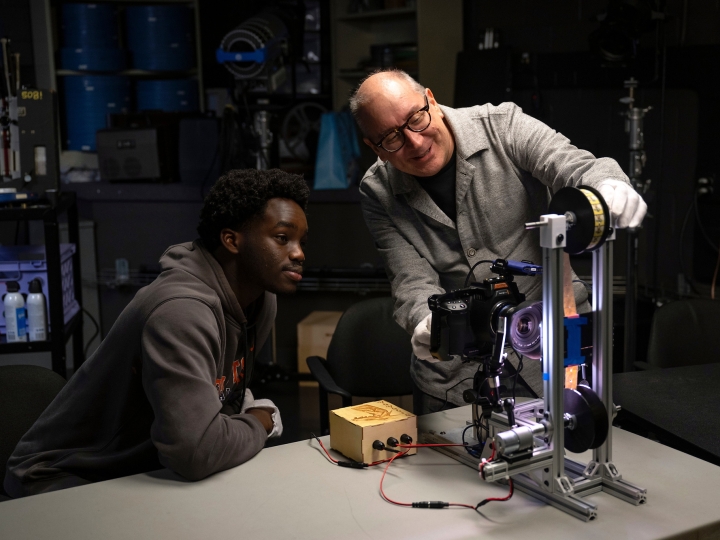Cool Classes: Geomorphology
March 2, 2018
What Class: Geomorphology
Who Teaches It: Professor Craig Kochel, geology & environmental geosciences
"Geomorphology is the study of processes that shape the Earth's surface, move water and sediment around and result in landforms we see around us. We live on an extremely dynamic planet where constant change is the rule — sometimes at rates imperceptible to the casual observer, other times expressed by catastrophic events such as landslides and floods. My goal is to help students recognize the results of processes that shape the landscape and understand the many hazards we experience on a dynamic Earth.
Find Your Path
"Most labs take place outdoors, where students get hands-on experience making observations, collecting data and learning how to apply these to situations they will likely encounter in environmental consulting firms, government agencies or graduate school. My approach takes advantage of Bucknell's location and focuses on developing observational and interpretive skills in the field.
"We begin by interpreting soils in pits dug in terraces of the Susquehanna River at a nearby gravel quarry, a site where students have played an important role over the years in preserving a wetland by contributing to the understanding of shallow groundwater flow. With help from Ben Hayes of the Bucknell Center for Sustainability & the Environment, students traverse the Susquehanna River in kayaks to sample sediments and measure streamflow. These students are often excited to see how the riverbed is armored with large boulders inherited from enormous Pleistocene (ice-age) floods.
"We are also fortunate to have an indoor facility to study river/hillslope processes experimentally with a large-scale sediment flume. Although students sometimes complain about shoveling 15 tons of sand to prep an experiment, they enjoy getting down-and-dirty in the big sandbox to watch stream channels evolve before their eyes as we alter sediment loads, tilt the slope of the 40-foot flume or rain on the experimental landscape. Students helped to simulate a landslide in the flume mimicking the deadly Oso Landslide of March 2014 in Washington, an exercise featured on the Canadian Discovery Channel.
"Bucknell sits near the glacial boundary, giving us the opportunity to view features produced when local climates were similar to those in modern Alaska. The culmination of the students' field experience is a month-long mapping project in western Union County, where they document the interaction of ancient glaciers, permafrost-laden hillslopes and extensive deposits of boulder-strewn landscapes created when glacial ice dams collapsed, releasing catastrophic floods across valley floors leading to Buffalo Creek. These deposits, locally called 'stone runs,' still impact our landscape today, resisting farming and providing animal migration corridors. Students collect field observations, correlate these to existing soils maps, interpret aerial digital-imaging scans and study aerial photos to create interpretive geomorphic maps of the region.
"After completing this project, students are able to apply their knowledge of surface processes and landforms to real-world situations, such as mapping surface deposits related to stability, siting of wastes and hazard assessment. Students learn to study current processes and read sediments and landforms to squeeze out an understanding of past landscape history, including how past climate fluctuations have imprinted our landscape. They are also better able to predict how landscapes may behave during future climate change."
See what else Bucknell offers in the Department of Geology & Environmental Geosciences.
Are we missing out on a cool class? Send suggestions to coolclasses@bucknell.edu.

